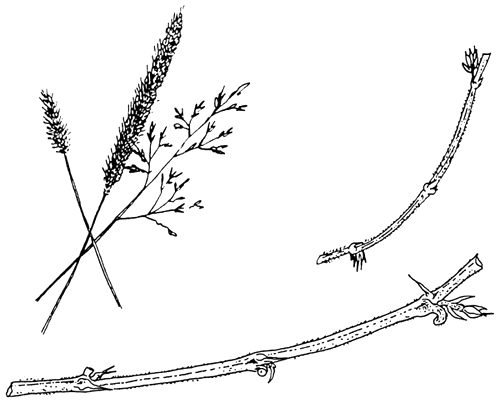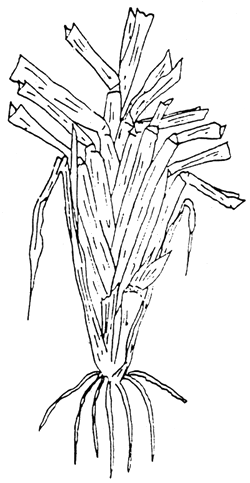 | 9. PROPAGATION OF TREES FROM CUTTINGS |
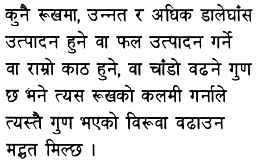 | Taking cuttings from a tree allows you to multiply up a particular tree that has good qualities that you want, such as a high yield of fodder, or fruit, or good timber or which grows quickly. |
 | It also allows you to propagate trees when it is difficult to get seed because some species like kabro are always lopped before the seed is ripe or the fruit is taken to eat or sell. |
 | The easiest and cheapest type of cutting is the hard wood cutting. |
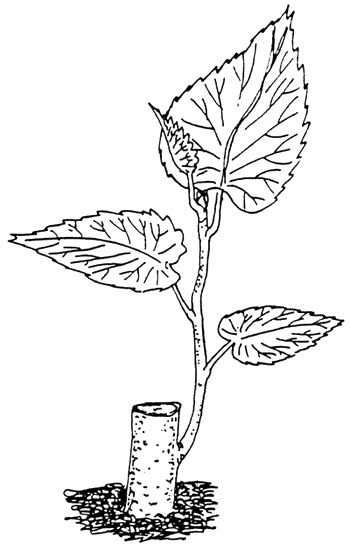
 | 9.1 HARDWOOD CUTTINGS |
 | Hardwood cuttings should be taken from woody branches which have grown through only one season. |
 | Older material should not be used because it doesn't grow new roots as well as the younger branches. |
 | Branches should be taken from the lower crown near to, but not from, the main stem. |
 | Also do not use branches which are damaged or diseased. |
 | Cuttings should be taken between January and April just before the buds start to grow. |
 | The cuttings should be about 15 – 25 cm long and 10 – 20 mm in diameter. |
 | They should have at least 2 bud scars and preferably 3 or 4. |
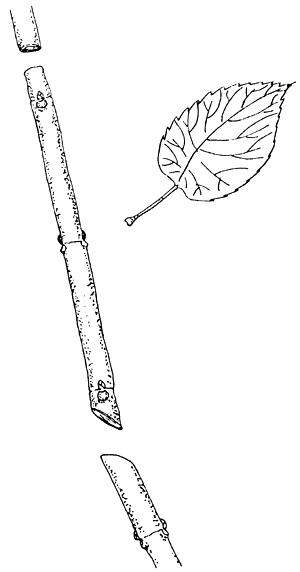
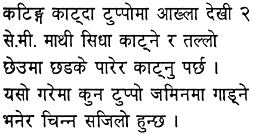 | Cut the top of the cutting straight across about 2cm above the top bud and at an angle just below the bottom bud so that you can tell which way to set it into the ground. |
 | Always use a sharp blade to take cuttings so that you don't split or crush them. If the cut isn't clean they will not grow new shoots or roots as readily. |
 | Remove all the side branches and leaves from the cuttings. (Some species set roots better if a single leaf is retained. If the leaf is large cut it back to ⅓ of its size) |
 |

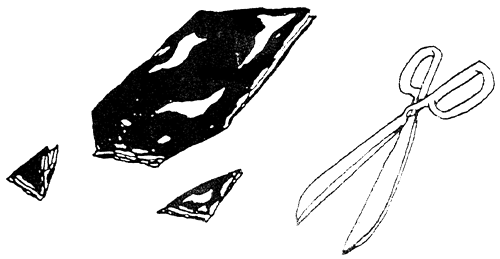
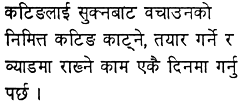 | Cuttings should be taken, prepared and set into the nursery bed all in one day so that they don't dry out. |
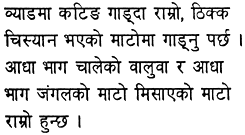 | Cuttings should be set into well drained soil. A good mixture is half sieved sand and half forest top soil. |
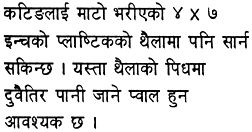 | Cuttings can be put in previously filled large polypots, 100 × 175 mm (4 × 7 inch) or larger, which have had the bottom two corners cut off to allow good drainage. |
 | Or they can be set in 30 cm deep nursery beds filled with the same soil mixture. If beds are used the cuttings should be set at 30 × 30 cm spacings. |

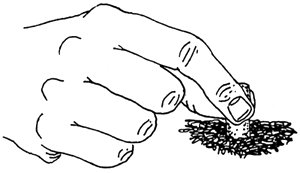

 | First make a hole slightly wider then the cutting in the polypot or the bed so that the bark is not peeled back off the cutting when it is pushed into the soil. |
 | Place the cutting into the soil with the top bud just above the soil surface. |
 | Carefully fill in the soil all around the cutting. |
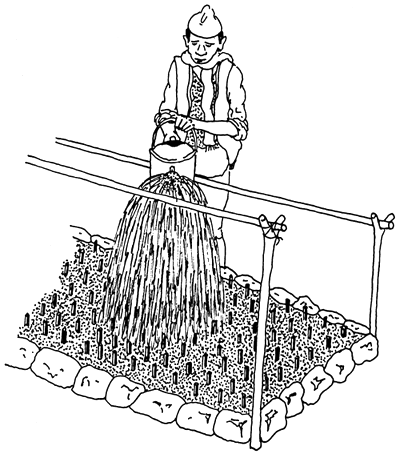
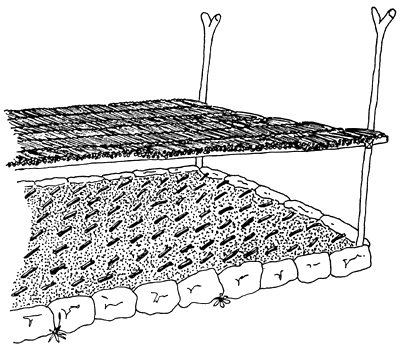
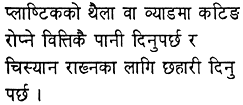 | Water the polypots or the bed immediately, put shades up over them and keep them moist. |
 | Shoots tend to come first from cuttings but the shades must be kept over them until good roots have grown some time later. |

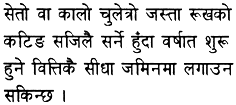 | Some trees such as seto and malo chuletro take from cuttings very easily and they can be planted out directly into the ground at the beginning of the monsoon. |
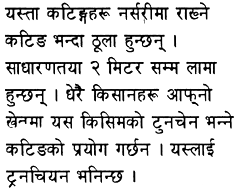 | These cuttings are usually larger than the ones used in the nursery and are up to 2 m long. Many farmers use this type of cutting, called a TRUNCHEON, for their own planting on their land. |
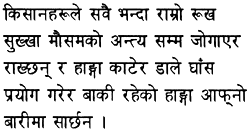 | They leave a good tree to the end of the dry season, lop it for fodder and at the same time plant the truncheons on their land. |
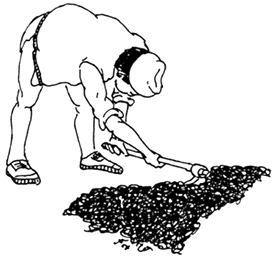

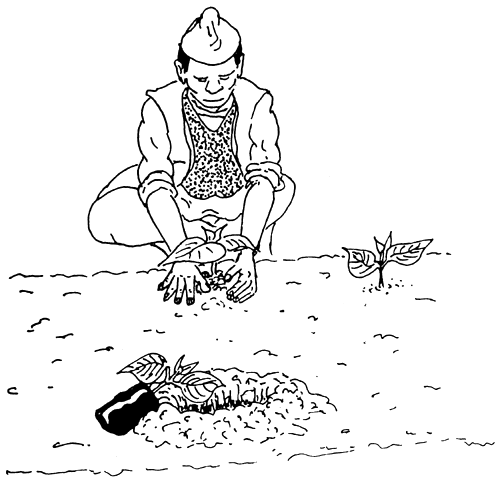
 | 9.2 STOOL BEDS |
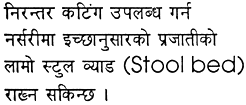 | To provide a continuous supply of cuttings in the nursery STOOL BEDS of desirable species can be set up. |
 | First dig the ground to a depth of 30cm. |
 | Dig in a doko of compost for every 5 – 10 square meters of bed. |
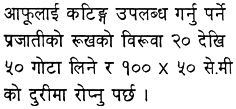 | Plant seedlings of the species you want to take cuttings from, about 20 – 50 of each species, in pits at 100 × 50 cm spacings. |
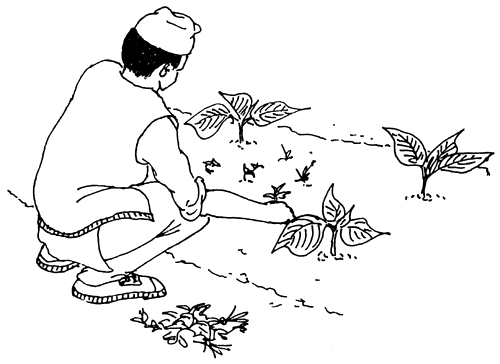
 | Keep the stool bed free of weeds at all times. |
 | Allow the seedlings to grow for 2 seasons, although in the Terai one season may be enough. |
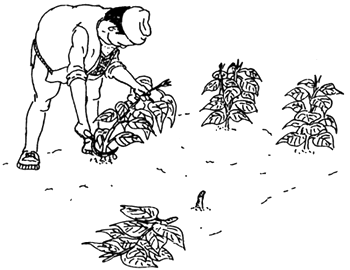

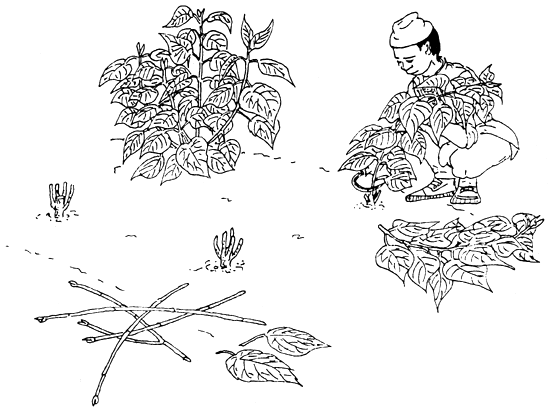
 | In the following February cut the saplings back to about 10 cm above the ground and they will reshoot. |
 | Each summer thin the regrowth from each ‘stool’ to allow about 4 – 6 shoots to grow on. |
 | Each winter from then on the stools can be cut and the shoots used to make hardwood cuttings. |
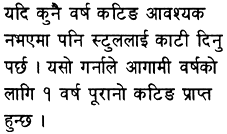 | Even if cuttings are not needed one year the stools should be cut back so that there will be one year old shoots for the next year. |
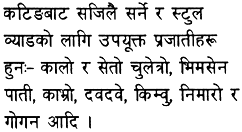 | Species which take well from cuttings and can be used to start stool beds include, kalo and seto chuletro, bhimsen pate, phaledo, kavro, khanyu, dabdabe, kimbu, nimmaro and gogan. |
